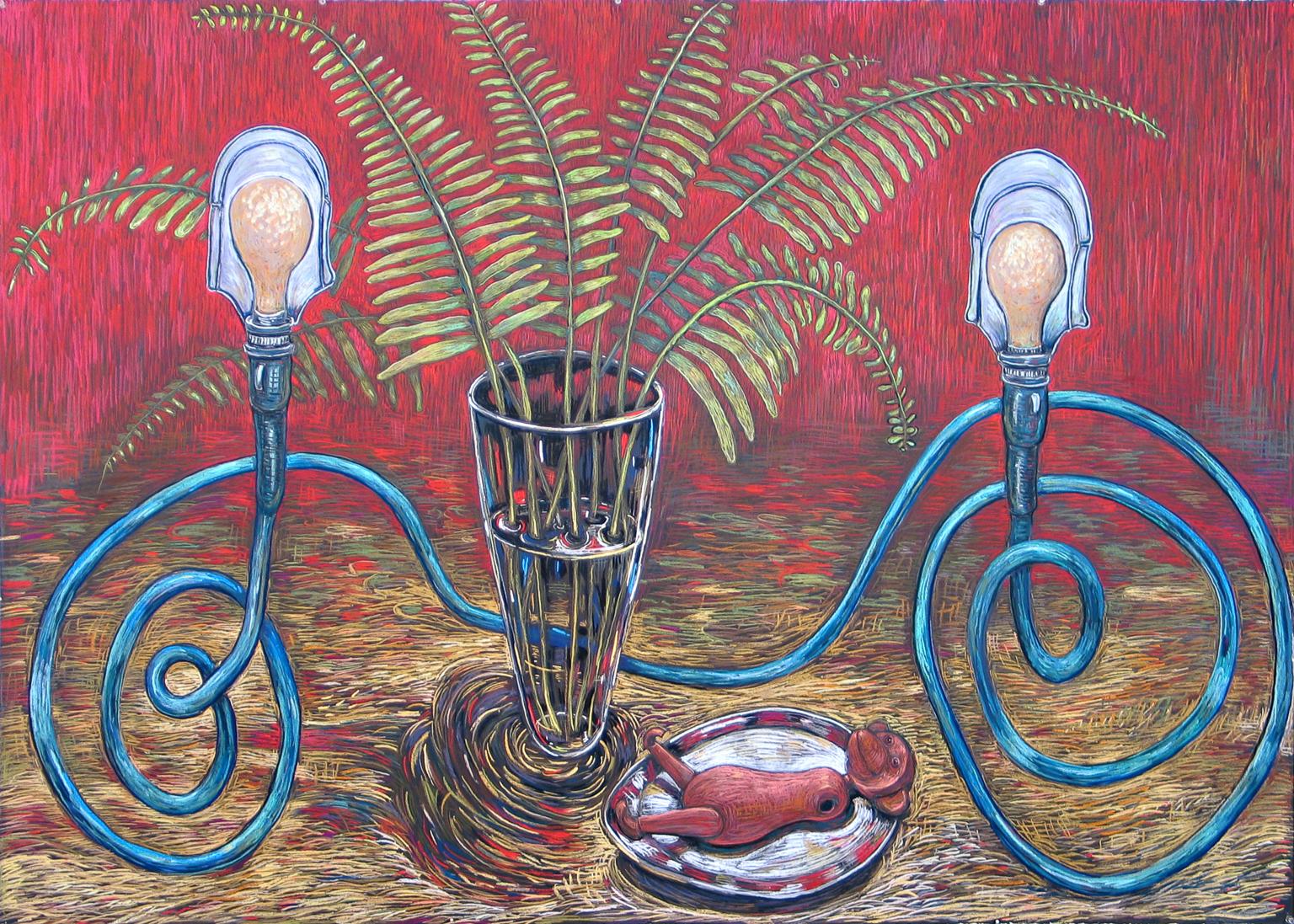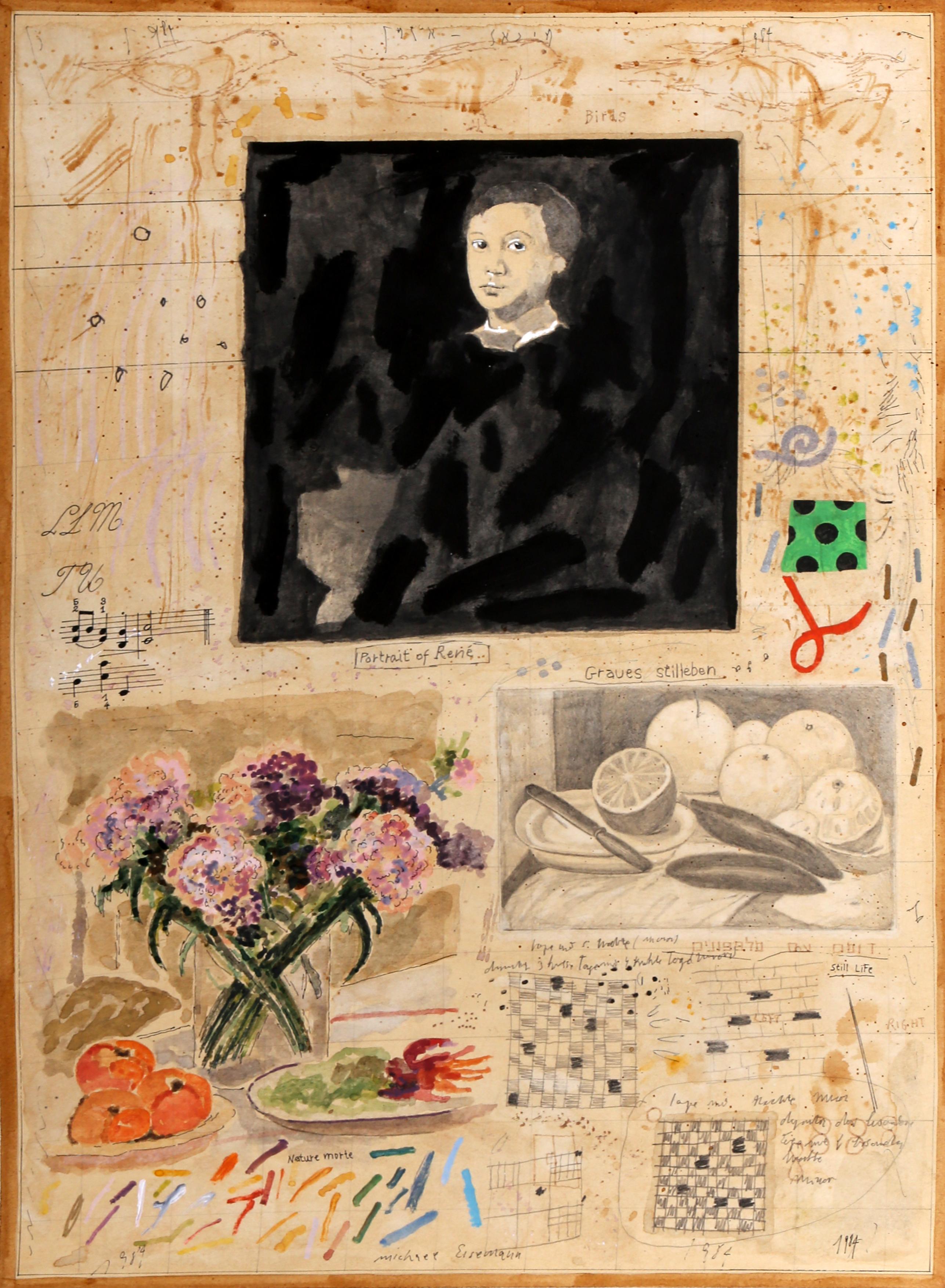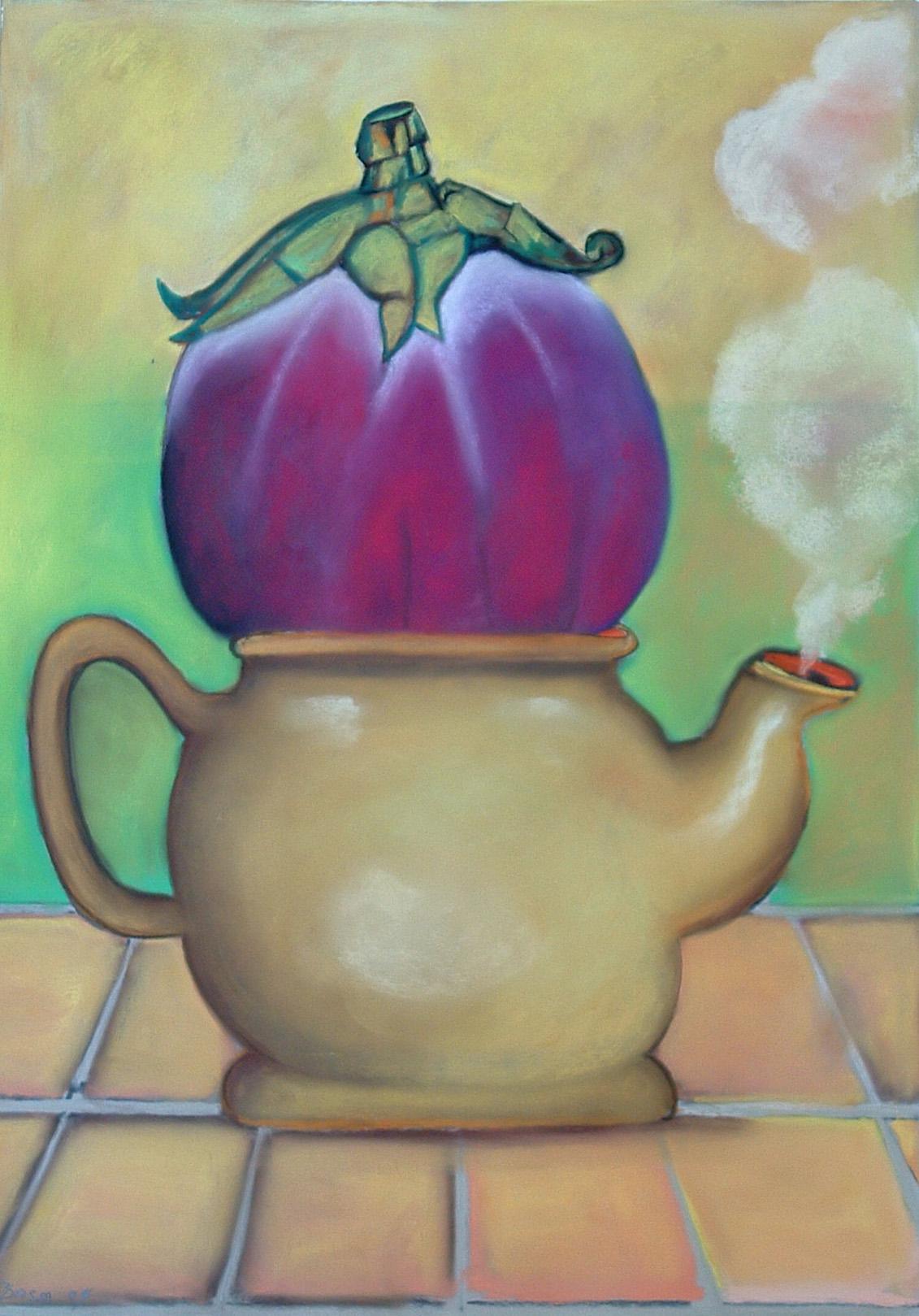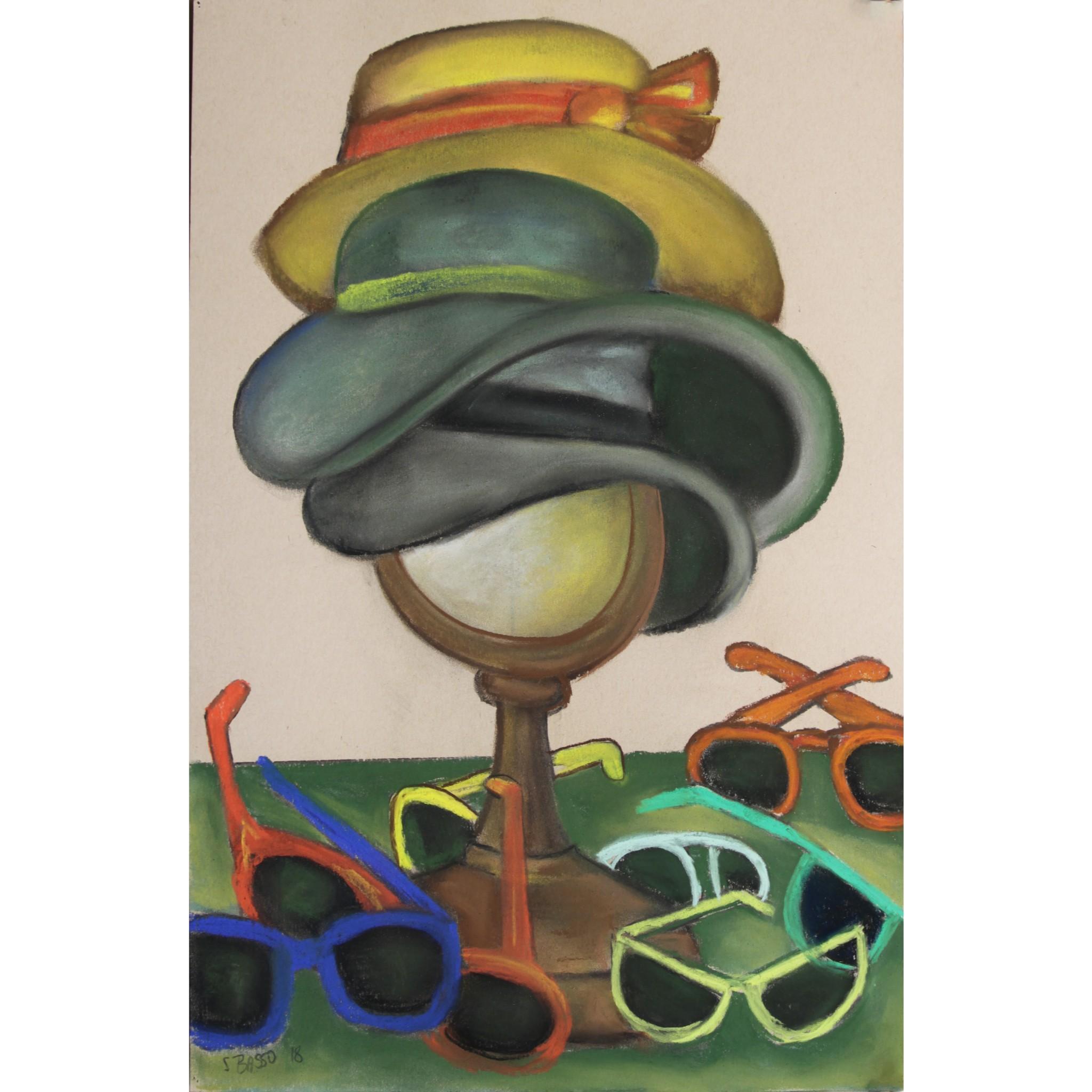Items Similar to Cynthia Par - Contemporary Pastel, Spring Still Life
Want more images or videos?
Request additional images or videos from the seller
1 of 9
UnknownCynthia Par - Contemporary Pastel, Spring Still LifeUnknown
Unknown
About the Item
A very fine pastel study depicting a basket of fruit, daffodils and an illustrated copy of The Bells and Other Poems by Edgar Allan Poe. The artist captures the scene in excellent detail, showing a very realistic portrayal of the still life place of floral fabric. Signed to the lower right. Well presented in a part gilt frame. On paper.
- Creation Year:Unknown
- Dimensions:Height: 25.99 in (66 cm)Width: 25.99 in (66 cm)
- Medium:
- Period:
- Condition:In fine condition.
- Gallery Location:Corsham, GB
- Reference Number:
About the Seller
4.9
Platinum Seller
These expertly vetted sellers are 1stDibs' most experienced sellers and are rated highest by our customers.
Established in 2010
1stDibs seller since 2018
881 sales on 1stDibs
Typical response time: 4 hours
- ShippingRetrieving quote...Ships From: Corsham, United Kingdom
- Return PolicyA return for this item may be initiated within 30 days of delivery.
More From This SellerView All
- Val Hamer - 2006 Pastel, Wine and FruitLocated in Corsham, GBA fine pastel painting by British artist Val Hamer. The scene depicts a still life composition with a wine bottle and three pieces of fruit. In loose strokes the artist captured the ...Category
21st Century and Contemporary Still-life Drawings and Watercolors
MaterialsPastel
- Val Hamer - 2004 Pastel, Two RosesLocated in Corsham, GBAn engaging pastel drawing by the British artist Val Hamer. The scene depicts two light pink roses in a tall clear vase. In loose strokes, the artist ...Category
21st Century and Contemporary Still-life Drawings and Watercolors
MaterialsPastel
- Val Hamer - Contemporary Pastel, Three Green ApplesLocated in Corsham, GBA fine pastel painting by British artist Val Hamer. The scene depicts a still life composition with three green apples. In loose strokes the artist captured ...Category
21st Century and Contemporary Still-life Drawings and Watercolors
MaterialsPastel
- 20th Century Pastel - Vase of Pink RosesLocated in Corsham, GBA charming pastel study depicting pink roses in a glass vase. Unsigned. Presented in wooden frame with a gilt window. On paper.Category
20th Century Still-life Drawings and Watercolors
MaterialsPastel
- John Ivor Stewart PPPS (1936-2018) - Signed Contemporary Pastel, PomegranateLocated in Corsham, GBA striking and bold still life study in pastel by the British artist John Ivor Stewart. With areas of acrylic. Handsomely presented in a double card ...Category
21st Century and Contemporary Still-life Drawings and Watercolors
MaterialsPastel
- Henry E. Foster (1921-2010) - 1997 Pastel, Bouquet of Flowers in a Ginger JarLocated in Corsham, GBA lovely pastel painting by the artist Henry E. Foster, depicting a flower arrangement in a jar. Well-presented in a double card mount and in a venner frame with distressed gilt effe...Category
20th Century Still-life Drawings and Watercolors
MaterialsPastel
You May Also Like
- Perfect WorldLocated in Gloucester, MAGabrielle Barzaghi's drawing "Perfect World" is part of a series also called "Perfect World," which engage with themes of utopia and dystopia. This work is unframed. Though we can provide a good frame at reasonable cost, safely shipping larger works on paper...Category
2010s Contemporary Still-life Drawings and Watercolors
MaterialsPaper, Pastel
- Expressionist Ink, Pastel, Crayon Drawing Jewish American Modernist Ben Zion WPABy Ben-Zion WeinmanLocated in Surfside, FLExpressionist ink and pastel crayon drawing of beans (carobs, flowers?) in pods Hand signed. Born in 1897, Ben-Zion Weinman celebrated his European Jewish heritage in his visual works as a sculptor, painter, and printmaker. Influenced by Spinoza, Knut Hamsun, and Wladyslaw Reymont, as well as Hebrew literature, Ben-Zion wrote poetry and essays that, like his visual work, attempt to reveal the deep “connection between man and the divine, and between man and earth.” An emigrant from the Ukraine, he came to the US in 1920. He wrote fairy tales and poems in Hebrew under the name Benzion Weinman, but when he began painting he dropped his last name and hyphenated his first, saying an artist needed only one name. Ben-Zion was a founding member of “The Ten: An Independent Group” The Ten” a 1930’s avant-garde group, Painted on anything handy. Ben-Zion often used cabinet doors (panels) in his work. Other members of group included Ilya Bolotowsky, Lee Gatch, Adolph Gottlieb, Louis Harris, Yankel Kufeld, Marcus Rothkowitz (later known as Mark Rothko), Louis Schanker, and Joseph Solman. The Art of “The Ten” was generally described as expressionist, as this style offered the best link between modernism and social art. Their exhibition at the Mercury Gallery in New York held at the same time as the Whitney Annual Exhibition of Contemporary American Painting, included a manifesto concentrating on aesthetic questions and criticisms of the conservative definition of modern art imposed by the Whitney. Ben-Zion’s work was quickly noticed. The New York Sun said he painted “furiously” and called him “the farthest along of the lot.” And the triptych, “The Glory of War,” was described by Art News as “resounding.” By 1939, The Ten disbanded because most of the members found individual galleries to represent their work. Ben-Zion had his first one-man show at the Artist’s Gallery in Greenwich Village and J.B. Neumann, the highly esteemed European art dealer who introduced Paul Klee, (among others) to America, purchased several of Ben-Zion’s drawings. Curt Valentin, another well-known dealer, exhibited groups of his drawings and undertook the printing of four portfolios of etchings, each composed of Ben-Zion’s biblical themes. He worked as a WPA artist. Ben-Zion’s work is represented in many museums throughout the country including the Metropolitan, the Whitney, and the Museum of Modern Art in New York, the Art Institute of Chicago, the Philadelphia Museum of Art and the Phillips Collection, Washington. The Jewish Museum in New York opened in 1948 with a Ben-Zion exhibition. Ben-Zion consistently threaded certain subject matter—nature, still life, the human figure, the Hebrew Bible, and the Jewish people—into his work throughout his life. "In all his work a profound human feeling remains. Sea and sky, even sheaves of wheat acquire a monolithic beauty and simplicity which delineates the transient as a reflection of the eternal. This sensitive inter- mingling of the physical and metaphysical is one of the most enduring features of Ben-Zion's works." (Excerpt from Stephen Kayser, “Biblical Paintings,” The Jewish Museum Catalogue, 1952). Mystical Imprints: Marc Chagall, Ben-Zion, and Ben Shahn presents the print work of three prominent 20th century Jewish artists born in the Russian Empire. Among these seventy pieces are etchings and lithographs from Chagall’s Bible series...Category
Mid-20th Century Expressionist Still-life Drawings and Watercolors
MaterialsPaper, Oil Crayon, Pastel, Ink
- Expressionist Color Drawing Cobalt Glass Vintage Frame Modernist Ben Zion WPABy Ben-Zion WeinmanLocated in Surfside, FLExpressionist ink and pastel crayon drawing of flowers in vase. Framed in a vintage cobalt blue glass original frame Hand signed and dated Framed it measures 13.5 X 10.5 The actual paper is 7.5 X 5.5 Born in 1897, Ben-Zion Weinman celebrated his European Jewish heritage in his visual works as a sculptor, painter, and printmaker. Influenced by Spinoza, Knut Hamsun, and Wladyslaw Reymont, as well as Hebrew literature, Ben-Zion wrote poetry and essays that, like his visual work, attempt to reveal the deep “connection between man and the divine, and between man and earth.” An emigrant from the Ukraine, he came to the US in 1920. He wrote fairy tales and poems in Hebrew under the name Benzion Weinman, but when he began painting he dropped his last name and hyphenated his first, saying an artist needed only one name. Ben-Zion was a founding member of “The Ten: An Independent Group” The Ten” a 1930’s avant-garde group, Painted on anything handy. Ben-Zion often used cabinet doors (panels) in his work. Other members of group included Ilya Bolotowsky, Lee Gatch, Adolph Gottlieb, Louis Harris, Yankel Kufeld, Marcus Rothkowitz (later known as Mark Rothko), Louis Schanker, and Joseph Solman. The Art of “The Ten” was generally described as expressionist, as this style offered the best link between modernism and social art. Their exhibition at the Mercury Gallery in New York held at the same time as the Whitney Annual Exhibition of Contemporary American Painting, included a manifesto concentrating on aesthetic questions and criticisms of the conservative definition of modern art imposed by the Whitney. Ben-Zion’s work was quickly noticed. The New York Sun said he painted “furiously” and called him “the farthest along of the lot.” And the triptych, “The Glory of War,” was described by Art News as “resounding.” By 1939, The Ten disbanded because most of the members found individual galleries to represent their work. Ben-Zion had his first one-man show at the Artist’s Gallery in Greenwich Village and J.B. Neumann, the highly esteemed European art dealer who introduced Paul Klee, (among others) to America, purchased several of Ben-Zion’s drawings. Curt Valentin, another well-known dealer, exhibited groups of his drawings and undertook the printing of four portfolios of etchings, each composed of Ben-Zion’s biblical themes. He worked as a WPA artist. Ben-Zion’s work is represented in many museums throughout the country including the Metropolitan, the Whitney, and the Museum of Modern Art in New York, the Art Institute of Chicago, the Philadelphia Museum of Art and the Phillips Collection, Washington. The Jewish Museum in New York opened in 1948 with a Ben-Zion exhibition. Ben-Zion consistently threaded certain subject matter—nature, still life, the human figure, the Hebrew Bible, and the Jewish people—into his work throughout his life. "In all his work a profound human feeling remains. Sea and sky, even sheaves of wheat acquire a monolithic beauty and simplicity which delineates the transient as a reflection of the eternal. This sensitive inter- mingling of the physical and metaphysical is one of the most enduring features of Ben-Zion's works." (Excerpt from Stephen Kayser, “Biblical Paintings,” The Jewish Museum Catalogue, 1952). Mystical Imprints: Marc Chagall, Ben-Zion, and Ben Shahn presents the print work of three prominent 20th century Jewish artists born in the Russian Empire. Among these seventy pieces are etchings and lithographs from Chagall’s Bible series...Category
1950s Expressionist Still-life Drawings and Watercolors
MaterialsPaper, Oil Crayon, Pastel, Ink
- Portrait of WomanBy Michael EisemannLocated in Long Island City, NYAn original mixed media painting of a portrait and still life images by Israeli artist, Michael Eisemann. The artwork is hand-signed and dated in ink...Category
1980s Contemporary Mixed Media
MaterialsPastel, Mixed Media, Watercolor
- Steamed Eggplant still life with sicilian eggplant and mustard color kettleBy Stephen BassoLocated in Brooklyn, NYpastel on toned sanded paper signed and dated on bottom left . part of the artist's restless still life seriesCategory
Early 2000s Modern Drawings and Watercolor Paintings
MaterialsArchival Paper, Pastel
- Tower of Glamour. Still life bright colors hats sunglasses and mirror subjectBy Stephen BassoLocated in Brooklyn, NYPastel on toned paper suitable for framing.Category
2010s Expressionist Still-life Drawings and Watercolors
MaterialsPaper, Pastel
Recently Viewed
View AllMore Ways To Browse
Pastel Still Life
Floral Pastels
Basket Of Fruit
Wells Bells
Floral Still Life Watercolor
Paintings Floral Pastels
Still Of Life Basket
Pastel Still Life Florals
Watercolor Fruit Still Life
Fruit Pastel
Pastel Floral Watercolors
Fruit Realistic
Still Life Fruit Realistic
Floral Pastel Drawings
Still Life Fruit Basket
Fruit Basket Still Life Painting
Edgar Poe
Edgar Allan Poe





